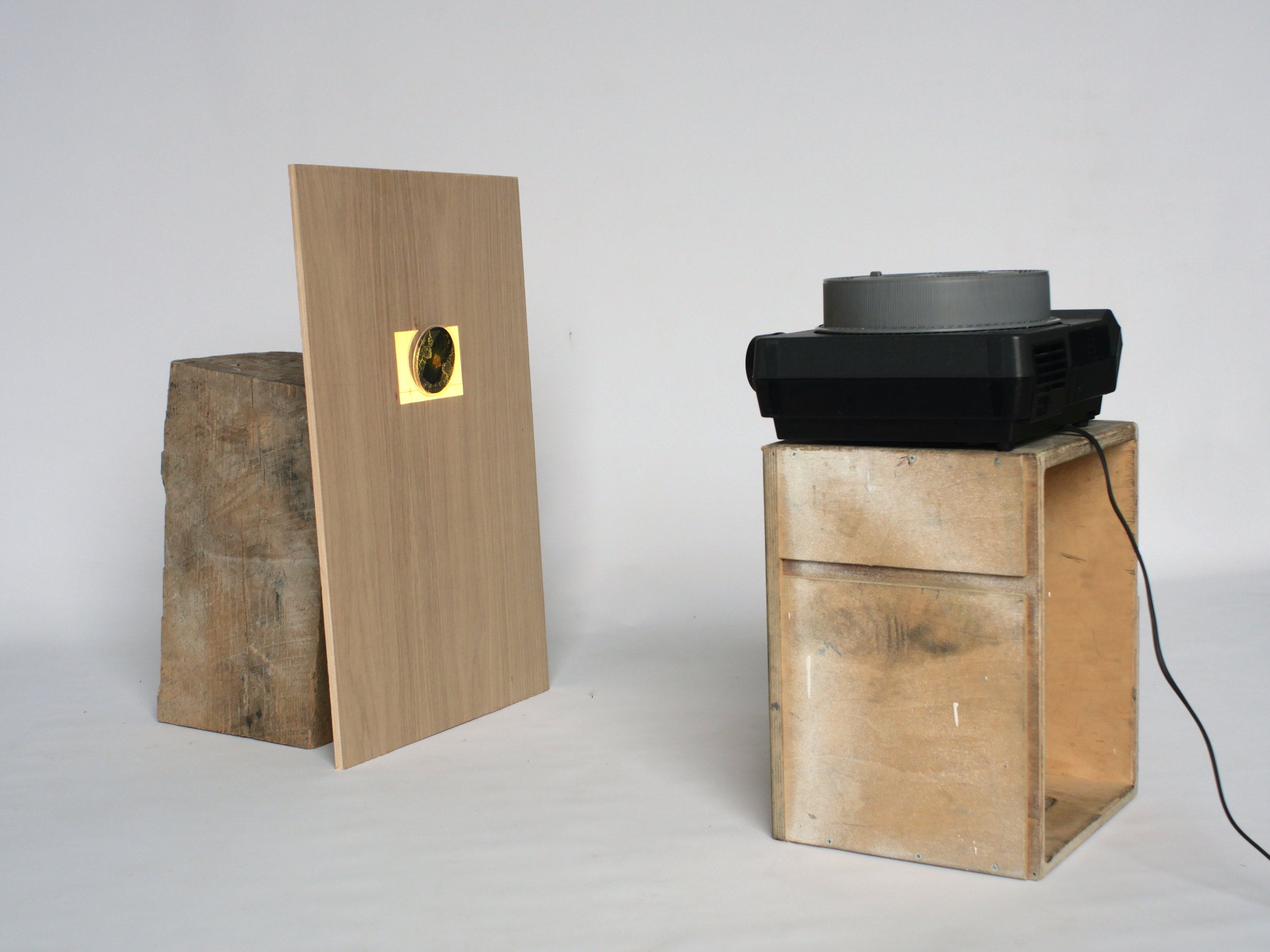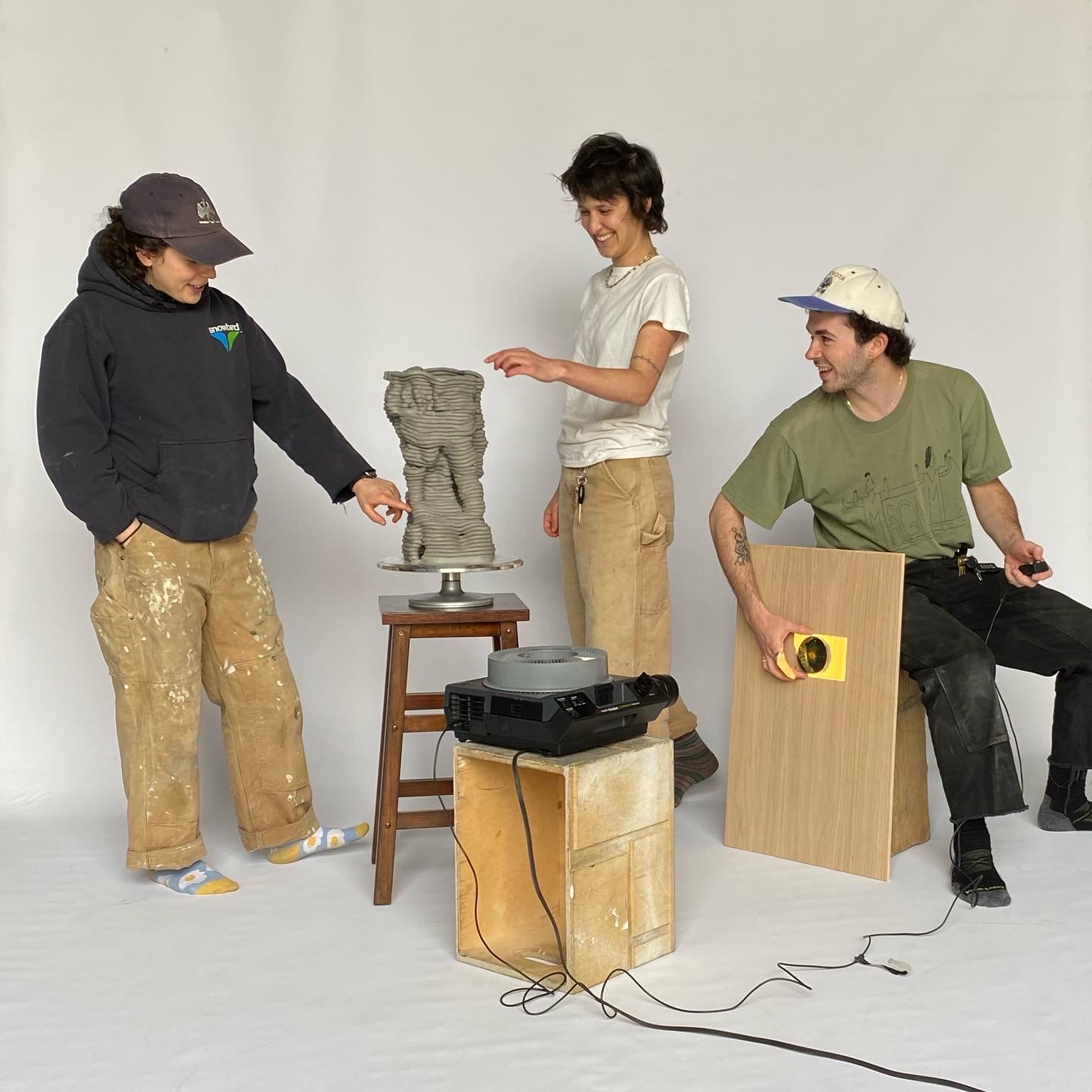Bioarchival Fabrication
2022
Collaboration with Caleb Stone and Iz Nettere
1' x 1' x 3'
unfired clay, slime mold, light
Bioarchival Fabrication is a collaborative, biomediated archival process involving the interaction between slime mold (Physarum polycephalum), humans, and climate data. Relying on the photophobic qualities of slime mold, the shape of the ozone hole is projected onto the slime as a means to suggest particular growth patterns. The slime mold’s “responses” are tracked using a time lapse camera and sculpted into physical archives of the organism’s movement.
While the result of this process is a physical artifact which embodies the climate data, engaging in the process itself results in the collaborative, situational knowledge we ultimately hope to engender. Through the act of touching and manipulating each form the data takes throughout the fabrication process we, the makers, gained an intuitive understanding of geological processes typically difficult to understand in their scale and complexity. While this iteration of the work explored the interaction between slime mold and ozone data, we believe this process can be applied in contexts where collaboration with non-human life can build deeper understanding of the natural world. Through the act of making, this project takes a critical approach to the process of translation and knowing, speculating about multispecies knowledge production as a means to generate new and emergent forms of understanding where anthropocentric knowledge falls short.




This work was completed as part of the Biodesign Challenge Collaboration taught at Parsons in Spring 2022. Caleb, Iz, and Lauria received a Student Research Award to continue their work.